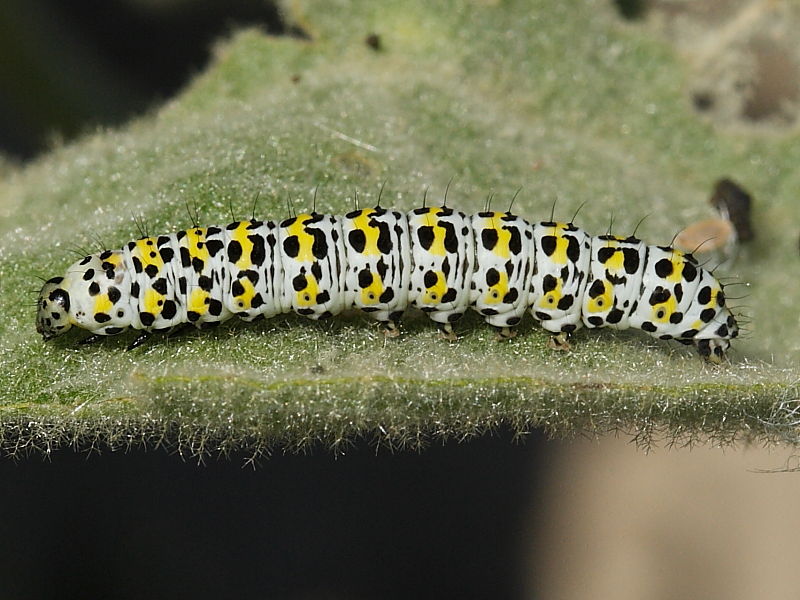
British caterpillars in Cornwall The Mullein Wildlife Insight
White caterpillars are long, soft-bodied worm-like insects with six legs and several stumpy prolegs. White is an uncommon color for caterpillars, making them stand out and easy to identify. To identify a specific white caterpillar species, look for black spots, yellowish-white or white setae (fine hairs), and protrusions on its body.

White Hickory Tussock caterpillar Caterpillar, Fuzzy, White
The large white caterpillar is pale green-yellow with striking black spots and visible hairs on its body. Its bold appearance is a warning to predators to eat it if they dare! The caterpillar accumulates mustard oil from its foodplant, which makes it taste unpleasant.

Harry white caterpillar with spots Lophocampa caryae
Small ermine moth adults have white wings with black markings, they have a wingspan of approximately 20mm and belong to the family Yponomeutidae. The creamy white, black marked larvae reach 20mm in length and feed gregariously under the cover of a dense silk webbing. They are difficult to identify as adults but each has a different host range.

The Öko Box Fuzzy White & Black Spotted Caterpillar
The monarch caterpillar ( Danaus plexippus) is quite easy to identify with its black, white, and yellow stripes. Monarch caterpillars gorge on milkweed which makes them poisonous to other birds and insects. Stripy monarch caterpillars grow to between 1" and 1.7" (2.5 - 4.5 cm) long.
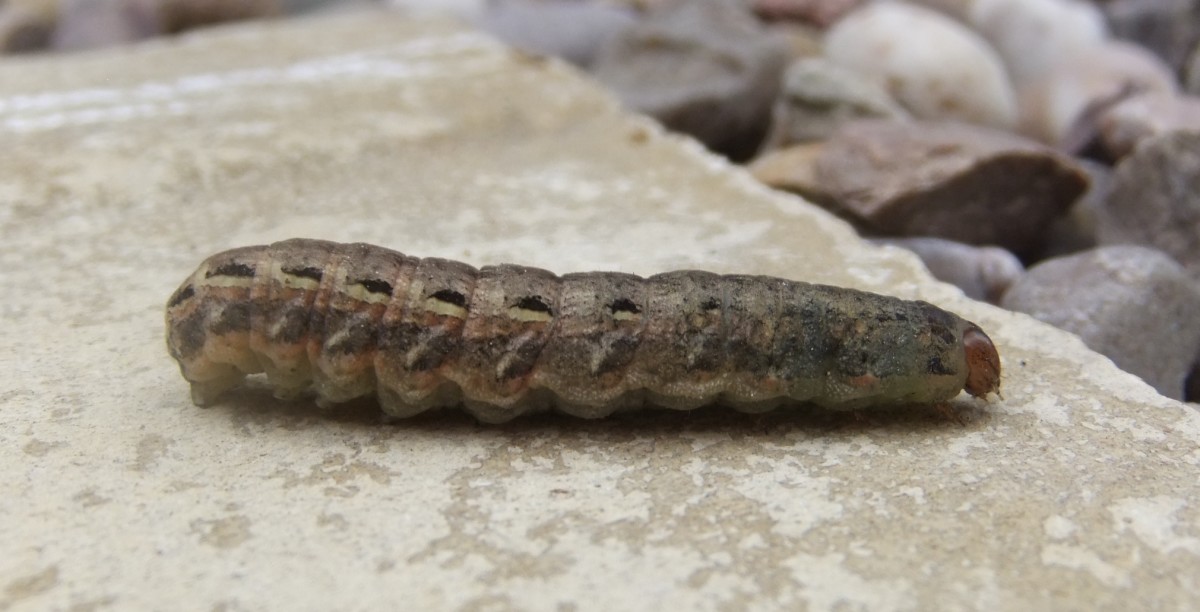
North American Caterpillar Identification Owlcation
Caterpillars. Caterpillars are the larval form of several insect groups, including moths, butterflies and sawflies. Many are colourful and ornamented with hairs and projections, usually signifying that they are are toxic to birds, their main predators. Other species are camouflaged, usually green or brown, to avoid detection.

Hairy White Caterpillar? Hyphantria cunea
White is the dominant color of the species. Black dorsal marks are also characteristic of this species. Tiny black marks are also seen along the sides of the caterpillar. Hickory Tussock Moth caterpillars also have white hair covering their body. These hairs cause mild rashes to humans who handle them as well as to their predators.

White Caterpillar Pseudosiobla excavata
A white moth with small black spots on the forewing, however, the number of black spots varies greatly from largely white examples which are almost entirely plain to those with many more spots that may even join together to form streaks along the wing veins. The white wing colour can also vary with creamy-buff or even brown examples often found in Scotland. The hairy larvae can be seen from.
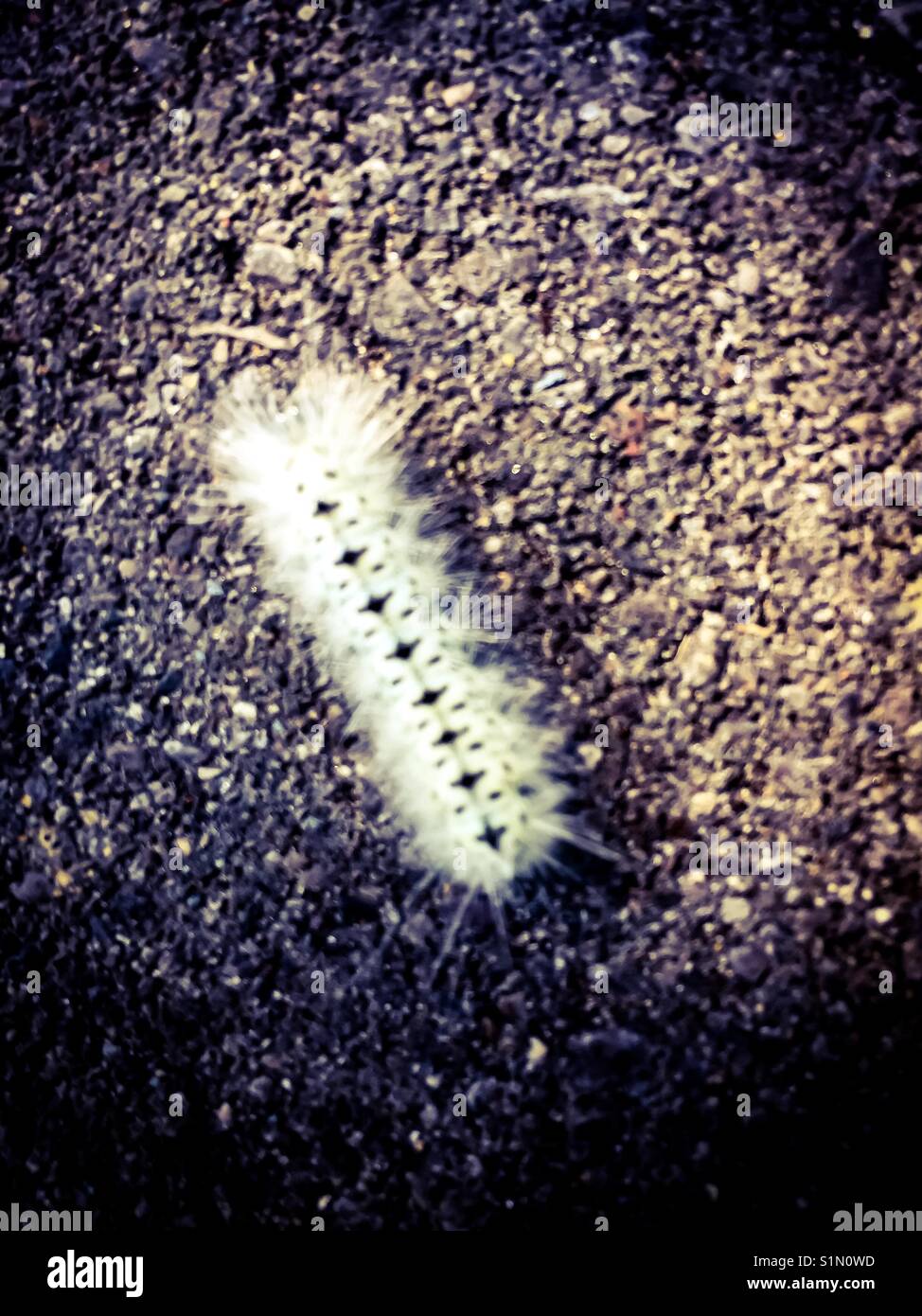
Hairy white caterpillar with black spots on the road Stock Photo Alamy
Description: Up to 7 cm long. Hairy, with long dark hairs on the sides of the body and shorter orange hairs on top. Young caterpillars are dark with orange bands. 1 2 3 4 Oak eggar When & where: August-June. A variety of habitats including grassland, heathland, fens, and hedgerows. Often found crawling across paths in spring.

Venomous white hickory tussock caterpillar spotted in Pennsylvania CBS News
Drinker moth When & where: August-June. A variety of habitats including gardens, but especially damp grassland, marshes and boggy areas. Description: Up to 7 cm long. Dark and covered with brown hairs and golden speckles. A row of white hairs runs down each side of the body. Fox moth caterpillar ©David Longshaw Fox moth

Avoid Poisonous Black and White Caterpillars? YouTube
Learn how to identify common British caterpillars with our expert guide to distinguishing markings, what they eat, and where and when to find them.

Artwork Of White Caterpillar With Black Spots HighRes Vector Graphic Getty Images
Common types of white caterpillars are the hickory tussock moth caterpillar, sycamore tussock moth caterpillar, American dagger moth caterpillar, fall webworm, and Virginian tiger moth caterpillar. These caterpillars go through multiple instars before turning into adult butterflies or moths.
White fuzzy caterpillars with black heads, about 1in long have invaded my backyard. North TX
This cool caterpillar is always found on some species of milkweed (Asclepias species). They aren't too hard to spot, with their bright stripes of black, white, and yellow. The milkweed that monarchs feed on is protected by poisonous sap, which in turn makes the monarch caterpillar poisonous to any potential predators. Not a bad form of protection!
CURRENT EVENTS Venomous Black and White Caterpillar
Black Caterpillars: An Identification Guide (With Photos) - Owlcation If you found a black or dark-colored caterpillar, this quick and easy guide can help you identify it.

Blue Ridge Discovery Center blog Beware fuzzy caterpillars!
The White hickory tussock moth caterpillar (Lophocampa caryae) is black and white with hairy clumps that create a black stripe on their backs. These caterpillars have long black pencil hairs on the sides and measure up to 1.8 inches. This white caterpillar is classified as venomous.

White Caterpillap with Black Spots Bug Guide. Net Stock Image Image of caterpillap, black
Description: A funky-looking grey and black caterpillar, with large tufts of hair, including a mohawk of yellow tufts on the back. Large caterpillars can often be spotted in late summer on a range of shrubs and trees.. Row of alternating red spots and lines on top, with a line of white dashes either side. There is a row of spots and dashes.
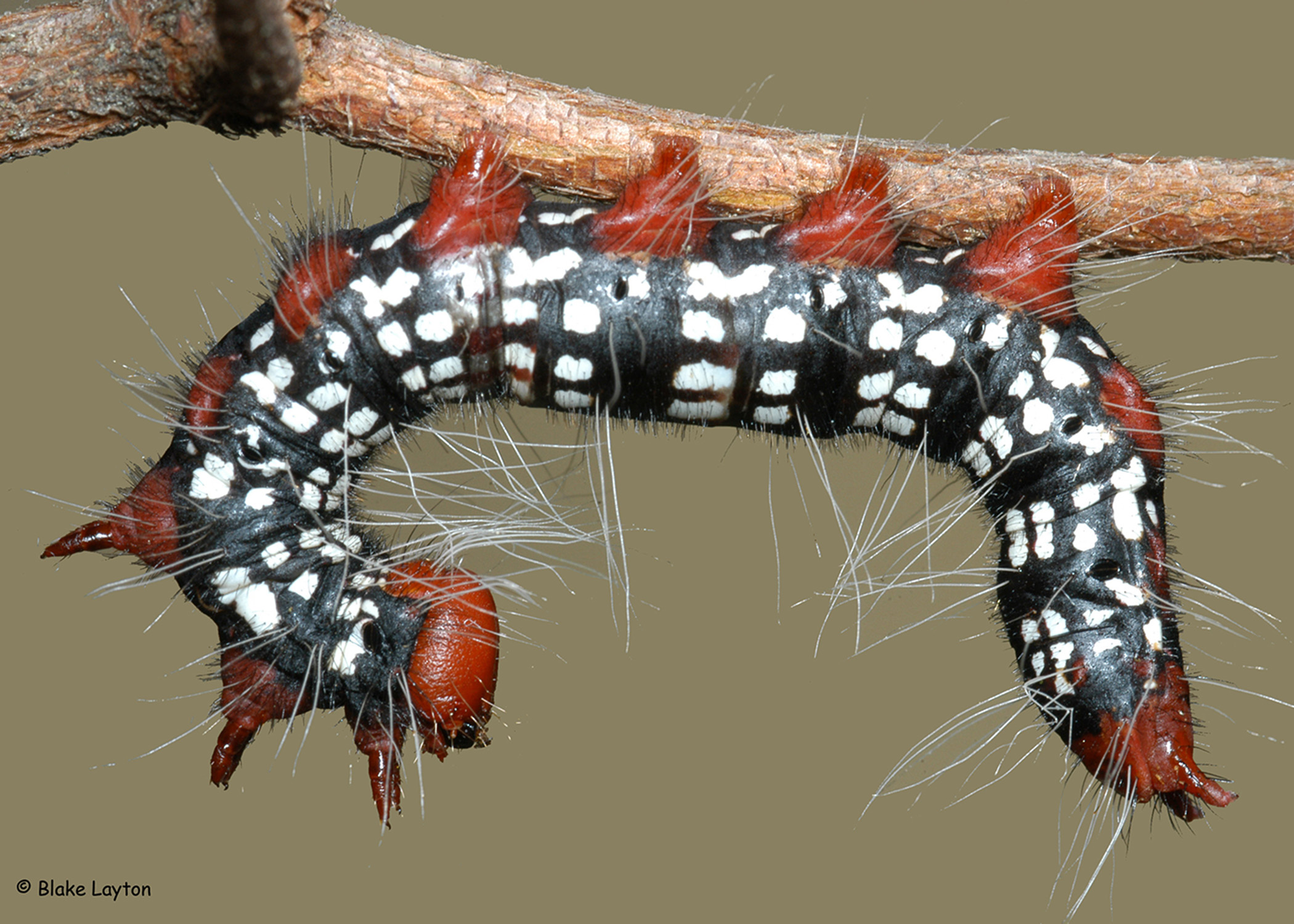
Bug's Eye View, Azalea Leaf Caterpillar, Vol. 4, No. 23 Mississippi State University Extension
Table of Contents Are White Caterpillars Poisonous? White caterpillars are largely not poisonous and non-venomous. They pose no threat to humans or animals. However, many species of white caterpillars can trigger skin reactions such as redness, itchiness, or even prolonged periods of rashes or dermatitis.